MERCEDES-BENZ 280 SL BEAUTIFUL CAR WITH AC AND 4SPD MANUAL
- Condition: Used
- Make: Mercedes-Benz
- Model: SL-Class
- Type: Convertible
- Trim: SL
- Year: 1971
- Mileage: 27614
- VIN: 11304410021482
- Color: Blue
- Engine size: 6 CYL
- Number of cylinders: 6
- Power options: Air Conditioning, Power Windows
- Fuel: Gasoline
- Transmission: Manual
- Drive type: RWD
- Interior color: Blue
- Options: Hard top, 4 spd manual, factory ac, Convertible, Leather Seats
- Vehicle Title: Clear
- Location: Bristol, Pennsylvania, United States
Description
1971 Mercedes-Benz 280SLMercedes-Benz introduced the 280SL less than a year after the 250SL arrived on the scene, and closed out the “pagoda” SL line in 1971 after nearly 24,000 were built. The 280 was very similar, to its predecessor, using clean, elegant lines, intelligent placement of the wheels in proportion to the rest of the design, and a tall, "pagoda" removable hard top that allowed for ease of ingress and egress.Like the other W113 cars, the 280 utilized a monocoque chassis, with front suspension courtesy of coils and wishbones, while the rear incorporated a single-pivot swing axle and transverse springs set up to compensate for camber. Four-wheel discs provided braking power.
The engine was a 2.8-liter, overhead-cam, inline-6. Bosch fuel injection was incorporated as well, and horsepower on the sport tourer was rated at 180 – a fair bit more than the 230 and 250 had access to. Torque was also higher at 177 ft-lb. A 4-speed manual transmission was standard, though a new 4-speed automatic transmission was optional, as was a ZF 5-speed manual.
Cabin refinement was high, with acres of leather, plush, supportive seats, big, readable gauges, Blaupunkt radios, and a quality of craftsmanship throughout, including the soft top, which disappeared easily and unobtrusively when not in use. New safety features included an energy-absorbing steering column and three-point seatbelts, while side marker lights are the biggest external visual difference between the 250 and 280.
By the time the 280SL gave way to the next generation SL, designated the R107, it had firmly established itself as one of the finest cars to come from the Stuttgart firm. With timeless, graceful styling, spirited performance and handling, and build quality and reliability second to none, the SL series of cars built from 1963 to 1971 are solid collectibles with plenty to offer.
Click here to read Hemmings Motor News' Buyers Guide for the 1968-1971 Mercedes-Benz 280SL.
" >Mercedes-Benz introduced the 280SL less than a year after the 250SL arrived on the scene, and closed out the “pagoda” SL line in 1971 after nearly 24,000 were built. The 280 was very similar, to its predecessor, using clean, elegant lines, intelligent placement of the wheels in proportion to the rest of the design, and a tall, "pagoda" removable hard top that allowed for ease of ingress and egress.
Like the other W113 cars, the 280 utilized a monocoque chassis, with front suspension courtesy of coils and wishbones, while the rear incorporated a single-pivot swing axle and transverse springs set up to compensate for camber. Four-wheel discs provided braking power.
The engine was a 2.8-liter, overhead-cam, inline-6. Bosch fuel injection was incorporated as well, and horsepower on the sport tourer was rated at 180 – a fair bit more than the 230 and 250 had access to. Torque was also higher at 177 ft-lb. A 4-speed manual transmission was standard, though a new 4-speed automatic transmission was optional, as was a ZF 5-speed manual.
Cabin refinement was high, with acres of leather, plush, supportive seats, big, readable gauges, Blaupunkt radios, and a quality of craftsmanship throughout, including the soft top, which disappeared easily and unobtrusively when not in use. New safety features included an energy-absorbing steering column and three-point seatbelts, while side marker lights are the biggest external visual difference between the 250 and 280.
By the time the 280SL gave way to the next generation SL, designated the R107, it had firmly established itself as one of the finest cars to come from the Stuttgart firm. With timeless, graceful styling, spirited performance and handling, and build quality and reliability second to none, the SL series of cars built from 1963 to 1971 are solid collectibles with plenty to offer. This car is equipped with Power steering, Power brakes, Factory air conditioning, 4 spd manual transmission and removable hard top. The car is believed to have only 27600 miles. The car is in excellent condition and will make the next owner very proud. Any questions call us at 215-781-3790.
 1967 Mercedes Benz 230 W110 Fintail Heckfloss - Sunroof - Manual - Beautiful!!!
1967 Mercedes Benz 230 W110 Fintail Heckfloss - Sunroof - Manual - Beautiful!!!
Mileage: 80,000
 1957 Mercedes Benz 250SE W111 Manual Coupe - BEAUTIFUL RESTORATION - SURVIVOR
1957 Mercedes Benz 250SE W111 Manual Coupe - BEAUTIFUL RESTORATION - SURVIVOR
Mileage: 13,961
 1972 Mercedes Benz 250C, 4-speed manual Coupe W114, beautiful condition must see
1972 Mercedes Benz 250C, 4-speed manual Coupe W114, beautiful condition must see
Mileage: 79,000
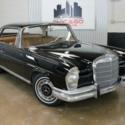 1962 Mercedes Benz 220SEb 4spd Floor, Euro, VIDEO
1962 Mercedes Benz 220SEb 4spd Floor, Euro, VIDEO
Mileage: 56500
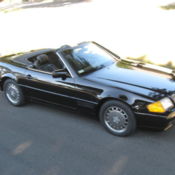 1991 Mercedes-Benz SL-Class TRIPLE BLACK1991 MERCEDES 500SL BEAUTIFUL CONDITION
1991 Mercedes-Benz SL-Class TRIPLE BLACK1991 MERCEDES 500SL BEAUTIFUL CONDITION
Mileage: 88,000
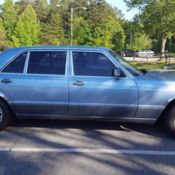 Classic, Beautiful Mercedes-Benz 420 SEL
Classic, Beautiful Mercedes-Benz 420 SEL
Mileage: 94,950
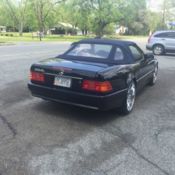 Fun Beautiful Mercedes Benz 300SL
Fun Beautiful Mercedes Benz 300SL
Mileage: 176,000
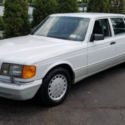 Beautiful 1990 Mercedes Benz 420 SEL w/ less than 25K
Beautiful 1990 Mercedes Benz 420 SEL w/ less than 25K
Mileage: 24,902
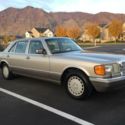 Beautiful 1991 Mercedes Benz 560SEL
Beautiful 1991 Mercedes Benz 560SEL
Mileage: 162734
 Beautiful 1972 mercedes-benz 280sel 4.5
Beautiful 1972 mercedes-benz 280sel 4.5
Mileage: 2200












